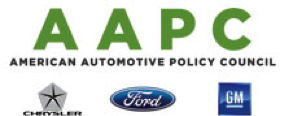For Immediate Release:
May 21, 2014
Contact: Colin Dunn
info@americanautocouncil.org
(202) 400 – 2609

EU and U.S. auto industry call for a comprehensive agreement under TTIP; Study examines EU & U.S. vehicle safety equivalence
May 21 2014, Washington, DC and Brussels – As the fifth round of negotiations of the Transatlantic Trade and Investment Partnership (TTIP) take place this week in Arlington, Virginia, the European Automobile Manufacturers’ Association (ACEA), the American Automotive Policy Council (AAPC), and the Alliance of Automobile Manufacturers (Alliance) reiterate their strong support for an ambitious automotive sector component in any final package.
The associations also announced that the University of Michigan Transportation Research Institute (UMTRI) in partnership with SAFER, a transportation research center at Chalmers University in Gothenburg, Sweden (two of the leading traffic safety research centers in the U.S. and EU), are commencing Phase 2 of a study in support of the TTIP negotiations. The study is evaluating whether motor vehicles manufactured in compliance with either the EU or U.S. regulatory requirements provide essentially equivalent real-world safety performance when driven on European roadways or on U.S. roadways.
At a stakeholder presentation on May 21st, the associations announced that Phase 1 of the study had been completed. UMTRI and SAFER have developed a methodology to analyze real-world traffic accident data using three statistical approaches, to provide a sound technical basis for assessing the similarities or differences in safety performance between EU and U.S. -regulated vehicles. The organizations have also identified potential country-specific and multinational datasets to use in Phase 2 of the study.
AAPC, ACEA and the Alliance believe that the benefits of any ambitious agreement can only be reached if sufficient regulatory convergence is achieved. The three associations have been working together since the announcement of the TTIP negotiations to harmonize positions and to deliver supporting evidence of essentially equivalent real-world safety performance.
EU-U.S. auto-related trade currently accounts for 10% of total trade between the two regions. Together, the EU and the US account for 32% of global auto production and 35% of global auto sales. Under a TTIP, the two regions would represent the largest share of auto production and sales ever covered by a single trade agreement.
***



